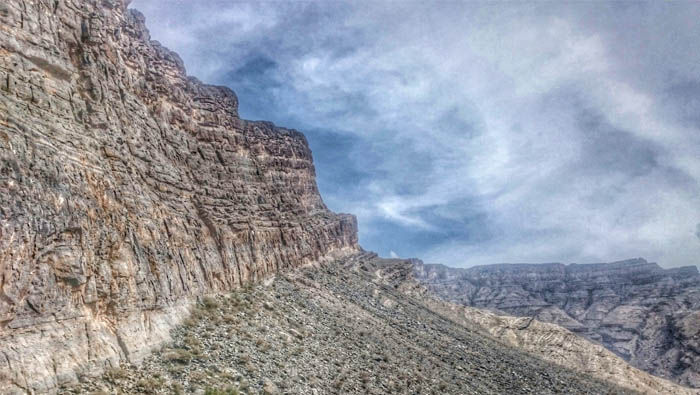
Muscat: Oman’s Hajar Mountains were home to some of the first oxygen-producing bacteria on earth, a research project undertaken at Sultan Qaboos University has revealed.
Mazin Al Salmani, an earth sciences graduate from the university, conducted the research as part of his earth science programme and plans to do more extensive research on the mountains during his PhD.
“These rocks were formed nearly 65 million years ago and are an archive of the history of the earth. If we want to know about the future, we have to study our past,” he said, speaking exclusively to the Times of Oman.
**media[838340]**
“The first oxygen-creating bacteria were found in these mountains and were among the first organisms that appeared on earth. The bacteria used photosynthesis to create oxygen. There was no oxygen when life was first formed on earth and it is because of these bacteria that we are able to breathe oxygen today. So, you can imagine how these mountains played a role in shaping our lives,” Al Salmani said.
“You can see what impact the past has had on climatic change. A million years ago, there were no humans, only rocks and animals, and these rocks and animal fossils show that they were affected by climate change. So, if you want to see how climate change in the future will affect us, you need to study the past. This study is called paleoclimatology,” he added.
He also stated that the Hajar Mountains were a source of tremendous wealth for the Sultanate, both historical and otherwise.
“These are said to be the highest mountains in the Arabian Peninsula. When we have high elevation, there is a different climate at the top than there is at the bottom. That creates conditions to grow different vegetables and trees. If we use this properly and work hard to improve these crops by building farms, this will help Oman’s economy, as we can then export crops that grow nowhere else in the Arabian Peninsula,” Al Salmani said.
“The wildlife there is also special and different to any other place, because these areas are quite remote and there are not so many people there. So, animals such as the Arabian leopard, are conserved there. Many special birds and animals live safely there,” he further said.
Also, the Hajar Mountains provided Oman with an opportunity for tourism. “You have rock walls for mountain climbing and hiking. You don’t often find mountains in the Middle East where you can climb. This also extends to caves. Over a space of hundreds of thousands of years, the rocks in these mountains slowly dissolved and formed caves, and one of Oman’s most famous caves, Al Hoota Caves, are located in the Hajar Mountains,” Al Salmani remarked.
“This sort of feature is unique in Oman, because the highest point in the Arabian Peninsula is Jabal Shams. This is a continuous mountain chain that begins all the way from Sharqiyah to Sohar and then all the way to Musandam. Scientifically, this is a part of our link to the past and contains so many older rocks that were formed during the formation of the earth. So, you can discover how the earth was formed,” he further noted.
**media[838339]**
Al Salmani also shed some light on the methods he used for his research.
“My geological study involved field work to study these rocks. We examined the rocks in the field and in the lab. This was done using petrography techniques, wherein we studied the rock and its contents under a microscope and did geochemical surveys. We were able to find oxygen and carbon isotopes, which made us understand the climate that was prevailing during the formation of these rocks,” he revealed.